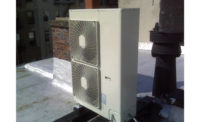Some of the new trends that owners should see in 2012, according to leading business sources, include the following:
According to Forbes magazine, fewer new business cell phones will be rolled out during the next 12 months. Also, Forbes reported that Android devices are being upgraded to an operating system called Ice Cream Sandwich that should “offer upside for firms.”
Touch screens and mobile payments will become more prominent, according to AllBusiness.com. Office PCs will offer more touch screen options, and cell phones will be used more as digital currency, replacing plastic credit cards.
The high-tech world will also spread into the use of social media, according to SmallBusinessComputing.com. Its “2011 Impact of Social Business in Small and Medium Business Study” showed that about 50 percent of small businesses already use social media, and another 25 percent plan to do so within the next 12 months.
So what do HVAC contractors see as tech trends in the next year? The NEWS asked and got some varied answers.
HVAC Contractors Speak Out
“I see the use of WiFi in HVAC applications like the new generation of geothermal equipment,” said Tim Wells of Hometown Heating & Cooling (Benton Harbor, Mich.). “The manufacturers’ advertising has caught on to a whole different generation of people, and I see it being used at a larger rate than ever before.”
Skip Schwartz of Faribo Plumbing & Heating Inc. (Faribault, Minn.) also felt that advances in equipment technology will be at the forefront this year. “Thermo environmental systems are going to be big,” he said. “These systems feature heat and energy recovery and are saving manufacturers thousands of dollars.”
Larry Sinn of The Service Co. (Greenville, S.C.) said technology is all about saving money. “The biggest trend will be energy savings via the Internet — making sure that the whole house works with the new equipment.”
Most HVAC contractors who responded said that technology trends are most notable in the area of communications to the field. “Mobile technology is streamlining our communication with field team members,” said Wesley Holm of Thompson Plumbing, Heating & Cooling (Cincinnati).
“We are providing iPads for our techs to work with customers, in order to understand the equipment and technology,” said Tom Stritecky of Waterbury HVAC, Plumbing & Electric (Sioux Falls, S.D.). “There are apps for everything using the iPad. We can show the customer the convenience or savings on the spot. This also allows techs to do communications with dispatch immediately.”
Bill Bradley of Airtronic Heating (Redford, Mich.) agrees that the iPad is the wave of the future — and people of all ages need to ride that wave. “I think the biggest tech change is the iPhone and iPad type devices,” he said. “People are conducting business through the web instead of the phone book, and iPads can be used to carry downloaded manuals, parts lists, etc.
“It’s a brave new world out there. My son, a 24-year-old college junior, said guys my age shouldn’t even be allowed to buy this stuff because we can never figure out how it works. I am doing my best so far to figure my new phone out.”
“The biggest technological trend that I see is enabling field techs to be connected with all customer service history and all manufacturer information via the Internet,” said Dewey Jenkins of Morris-Jenkins Air Conditioning & Heating (Charlotte, N.C.). “It empowers the tech tremendously.”
“The biggest technological trend that will be affecting our business is the ease of using wireless invoicing, signature capture, and printing of invoices with lower cost equipment, making this technology available to more HVAC contractors,” said G. Andrew Smith of Aire Serv of Southeast Texas (Beaumont, Texas).
One contractor, Craig Jones of Slasor Heating & Cooling (Livonia, Mich.) said that technological gains in the refrigerant field need a closer look this year because he believes that a rush to get to new efficiency levels has created some new concerns.
“Hopefully our trade can move away from R-410A refrigerant to something that is lower operating pressure, has a lower affinity to moisture, safer to transport in vehicles and handling, does not cause formicary corrosion, etc.,” he said. “We have collectively stuck our heads in the sand about the problems associated with R-410A. There are homes where R-22 systems worked fine — and without leaks — for decades.”
Stritecky said that when the smoke clears, all of the high-tech gadgetry available will not sell HVAC systems. “After flying high for the few years prior with the tax credits, we need to get back to some basics in our industry,” he said. “During the tax credit era, we could have a monkey with picture charts showing what we need to sell. [It was] point-and-sell theory.”
Now, he said, everything is different. “We need to know that all customers are not going to choose the top-end system. We are retraining our sales staff and technicians to offer and understand what the customer’s wants and needs are,” Stritecky said.
He added, “We had to fire the monkeys.” Then he described his new strategy: “We are integrating add/on sales as a priority. Zoning systems, air filtration, carbon monoxide devices, and wireless/Internet access ready temperature controls are the leading items of wants. Comfort and convenience still outsell efficiency.”
Publication date: 01/30/2012








